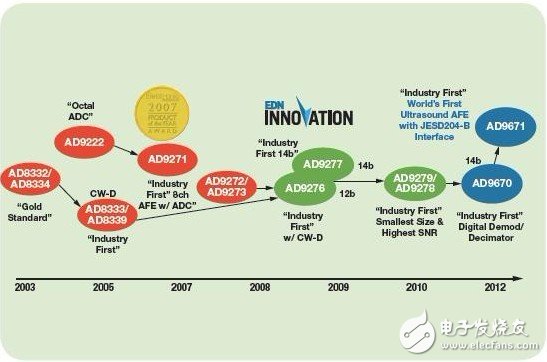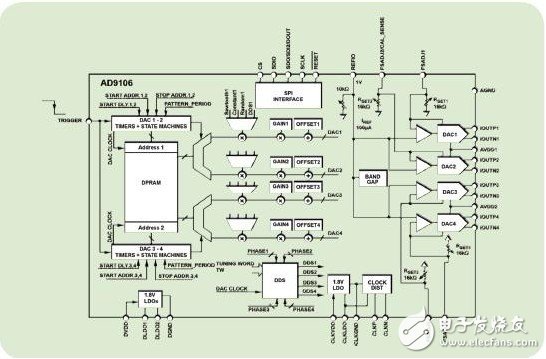Medical ultrasound system principle and typical architecture:
The ultrasound system can generate images of internal organs and structures, generate blood flow and tissue motion maps, and provide highly accurate blood flow velocity information by emitting acoustic energy to the human body and then receiving and processing the echoes.
The ultrasound system includes sensors, high voltage switches, high voltage transmit circuits, transmit (Tx) / receive (Rx) switches, receive channel analog front end (AFE), beamformers, beamformed digital signal processing circuits, display processing circuits and peripherals . The AFE includes a low noise amplifier (LNA), a variable gain amplifier (VGA), an anti-aliasing filter (AAF), and an analog-to-digital converter (ADC). Beamforming is divided into two categories: digital beamforming and analog beamforming, which are used for different applications.
Medical ultrasound system design considerations and major challenges:
Receive AFE circuit performance such as noise performance, signal-to-noise ratio (SNR), and dynamic range (DR). Typical requirements for high-end system dynamic range are as follows: B mode 70 dB, PWD (pulse wave Doppler) 130 dB, and CWD (continuous wave Doppler) 160 dB.
The emission voltage. In order to improve signal transmittance and perform harmonic imaging, a higher emission voltage is required. Sound power increases as the emission voltage increases, but the emission voltage does not exceed the safety requirements imposed by agencies such as the US Food and Drug Administration (FDA).
The complexity of the beamformer. To achieve high graphics quality, there must be a large number of beamforming channels. High complexity leads to high power consumption and requires more imaging space to implement.
Cooling. As devices evolve toward miniaturization, especially with the goal of improving image quality, heat dissipation issues become important.
Previously, implementing ultrasound imaging systems required a large number of high performance transmit and receive circuits, resulting in a large and expensive cart-type system. Recent advances in integration technology have enabled system designers to adopt smaller, lower cost, more portable imaging solutions that are close to cart systems. Continuous technological advancement requires continuous integration of these solutions while improving their performance and diagnostic capabilities.
ADI's total solution:
ADI offers a wide selection of amplifiers, data conversion, signal processing and power management solutions to deliver the best image quality for cart and portable ultrasound equipment, while reducing power consumption and cost. In addition, to support customer design and development, ADI also provides evaluation boards, Gerber files, simulation tools and professional application technical support.

Note: The above signal chain represents a medical ultrasound system. The technical requirements of the modules may vary in the specific design, but the products listed in the table below represent the ADI solutions that meet some of the requirements.

Introduction to the integrated AFE:
ADI's AD927x family and the latest AD9670/1 integrated analog front end (AFE) offer more options for addressing ultrasound system design challenges. Customers can choose the AFE that best meets RX performance, power consumption and imaging mode, and use it in different application platforms with a simple and flexible pin-compatible design.

Introduction to linear launch:
ADI offers linear emission solutions for medical ultrasound systems, and SNR performance improvements offer significant advantages in harmonic imaging (HI). The linear launch solution uses a high speed TxDAC. ADI's AD9106 is a high performance 12-bit, 180Msps quad TxDAC with integrated on-chip mode memory for complex waveform generation with an output direct digital synthesizer (DDS) and SPI interface for configuring and loading waveform data.

The housing of Sword Series LED Street Light like sword, Duct type thermal design, reduce the weight of the light and ensure good heat dissipation, lower luminous decay, and also extend life span of the leds. Adopting the popular CHEM modular design, effectively reduce the following maintenancecose. Durable lights with long life spn up to 50000hours; No need replace the lights
frequently just make the regular maintenance. Green environmental protection, no UV light and infrared radiation, no mercury pollution.
Sword Series LED Street Light
Sword Series LED Street Light,Street LED Lights,COB LED Street Light,Street LED Lamp
Shenzhen Ri Yue Guang Hua Technology Co., Ltd. , https://www.ledlightinside.com
